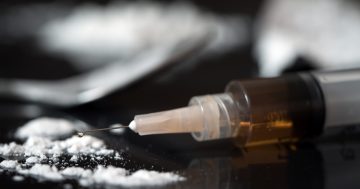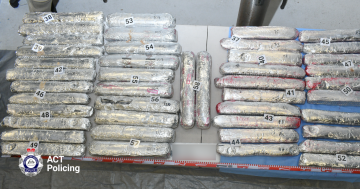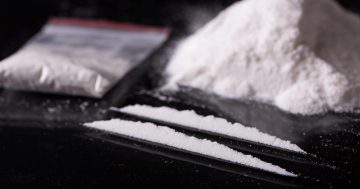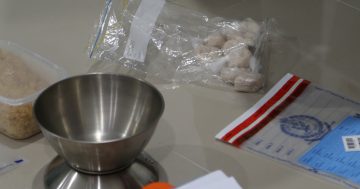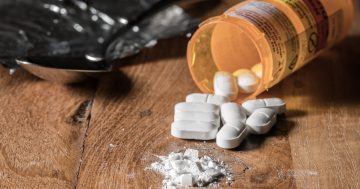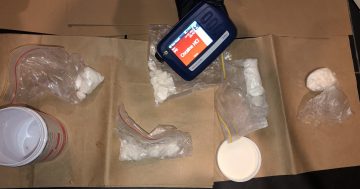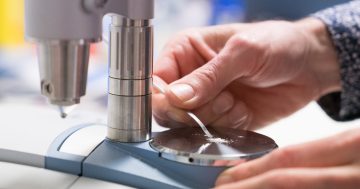
The ACT has a drug problem: What can we do to solve it?
There has been a lot of talk about the drug consumption of Canberrans following the release of a number of reports examining the use of drugs by Australians and the particular patterns of Canberrans’ drug use. These reports always give us a good opportunity to reflect on how well we are responding to problematic drug use and what more needs to be done.
The good news is that the Australian Institute of Health and Welfare (AIHW) has found that the ACT has the lowest prevalence in the use of illicit drugs, and our risky use of legal drugs including tobacco and alcohol is decreasing. Through analysis of wastewater across Australia however, the Australian Criminal Intelligence Commission (ACIC) has found that the ACT has its share of problematic illicit drug use, with cocaine use the second highest in the country (after NSW), an increase in the use of heroin (although still at much lower levels that the peak in the 1990s), and spikes in the use of party drugs such as ecstasy (MDMA) during the summer months.
Newer forms of drugs, such as Ice (a form of meth/amphetamine) always get a lot of press. There has been significant focus on Ice-fuelled violence and damage, and every parent was chilled when they heard about the recent crash in Braidwood, seriously injuring teenager Thomas (TJ) Campagna involving a driver who was allegedly affected by methamphetamine when they crashed. While the AIWH report found that the use of Ice is increasing – moving away from powder forms, the ACIC data suggests only small increases in ACT resident’s use of meth/amphetamines from a relatively low base. In the ACT it is hard to know exactly how many people are struggling with these issues with AIHW not reporting specific ACT figures, but other studies suggest there is a small group that is dependent on Ice, and this form of meth/amphetamines accounts for about a quarter of all drug treatment episodes. The fact that there has been a shift to these more pure forms of meth/amphetamine also means that while the numbers are relatively stable, we are likely to see an increase in harm and need for treatment.
There are also other worrying trends. An increasing problem seems to be the misuse of prescription drugs. Another recent AIWH report found that around 2.5 million Australians used these drugs, including opioids such as oxycodone, morphine, codeine, and tranquillizers/sleeping pills such as benzodiazepines for non-medical use – and this is higher than all illicit drugs except for cannabis. The ACT seems to mirror these trends, with the ACIC analysis finding that the ACT has the highest use of oxycodone across all capital cities (although much lower than in regional areas), and quite high (but stabilising) use of fentanyl.
We should be concerned by the harms caused by the problematic use of illicit and legal drugs – to individuals, families and the general public. We need to be aware of changing trends and ensure that our approaches are evidence-informed and addressing both current and emerging issues. There are consistent calls for law reform, to shift us from prohibition to harm reduction. Sometimes, national approaches work. From February 2018, codeine will only be available by prescription. Often, harm reduction is the most effective strategy. Across the country and here in Canberra, we have seen a huge reduction in deaths caused by heroin over the last 20 years due to harm reduction strategies including health promotion, peer education and the introduction of programs such as naloxone training being provided to at-risk communities. However, harm reduction is still a perplexingly controversial strategy. In Victoria this year we saw the announcement of only the second safe injecting room, an intervention that is shown to save lives, reduce crime and be cost effective. Here in Canberra, despite significant support, we are yet to see pill testing at festivals introduced. Obviously, there is also a need for treatment when people seek help, and again, evidence that there is a lack of access for specialised treatment services, particularly for drugs such as Ice here in the Capital.
An innovative initiative that will be introduced in the ACT is a specialised drug court which will aim to tackle drug dependence or problematic drug use when it is the underlying cause of crime. A key strategy is to include court-monitored treatment rather than traditional punishments. Drug courts operating in NSW have been proven to be a much more effective way of dealing with offenders, allowing them to attend treatment while keeping them away from the criminal justice system which causes loss of work and social stability. The success of this approach, however, is dependent on there being a range of evidence-informed treatment options, and additional community support to ensure people who are struggling with problematic drug use get the help they need.
I think we need to continue to reassess our approach to drug misuse, identify effective law reform and focus much more heavily on harm reduction strategies. What do you think?
Rebecca Vassarotti works as an independent consultant in the health and community sector, and is currently working with local drug and alcohol services. She is an active member of the ACT Greens and was a candidate in the 2016 Territory Election.












